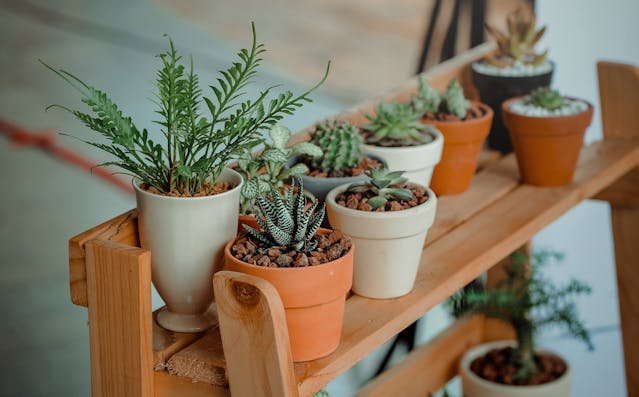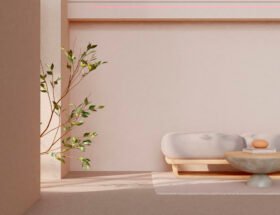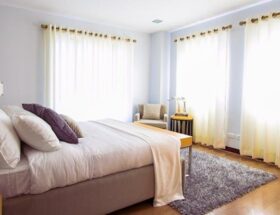
Adapting Your Home Decor to Different Climates Post-Move
Moving to a new climate frequently requires significant adjustments in many areas of life. Adapting your home decor to different climates isn’t just about transforming the visual appeal of your spaces. It also enhances comfort and guarantees that your living environment is always pleasant, regardless of the weather. For those relocating from a frosty region to a tropical locale, or vice versa, the changes in temperature and humidity can impact everything from your furniture to your flooring. It’s not just a matter of style; materials that function well in one climate may be less effective in another, making decor materials a priority for maintaining durability and comfort.#
Assessing Your New Climate
To grasp what modifications might be necessary, thorough research into the local weather patterns is indispensable. It includes examining both temperature fluctuations and humidity levels, which can significantly influence your choice of home furnishings and decor materials. For instance, materials that resist moisture in regions with high humidity will prevent mold and damage. On the other hand, Southern California’s sunny and dry climate can affect the longevity and comfort of various materials. UV-resistant and lighter fabric finishes are advisable here to prevent fading and heat retention. Besides, it is significant to consider other environmental factors, such as the amount of natural light available and exposure to the elements. This assessment will guide you in choosing the right colors and textures that meet the local climate.
Choosing Climate-Appropriate Materials
Choose home decor materials that complement the local climate to create a cozy and stylish vibe in your new place. For warmer climates, like California or Florida, it’s advisable to choose breathable fabrics such as cotton or linen, which help keep the indoor environment cool and airy. These materials are excellent for areas with high temperatures as they allow better air circulation, reducing the discomfort caused by heat.
However, for those moving to colder regions like the Northeastern United States or parts of Canada, it’s wise to integrate insulating materials into your decor. Materials like wool and flannel add warmth and comfort to your living space and contribute to energy savings by retaining heat.
Adjusting Color Schemes for Different Climates
Adjusting color schemes to suit different climates is another strategic way to enhance the comfort and aesthetics of your home. In warm climates, opting for light colors is highly effective. These shades not only reflect heat, thereby keeping indoor spaces cooler, but they also give rooms a fresh, open feel. Soft blues, gentle greens, and creamy whites are perfect for curtains, walls, and large furniture. They create a calmer environment in homes exposed to higher temperatures.
Conversely, darker shades are ideal for colder climates where creating a sense of warmth and coziness is a priority. Deep hues like burgundy, navy, and forest green can help absorb heat during the day and release it at night, making living spaces more comfortable. These colors also add a rich, inviting quality to rooms, which can be particularly welcome during the long winter months.

Seasonal Decor Transitions
Preparing your home for seasonal changes not only refreshes the space but also extends the life of your decor. One effective way to manage these transitions is by utilizing storage units. Storage units are a practical solution, especially in areas like Los Angeles in Southern California, where heat can be intense. These units help safeguard items sensitive to California’s high temperatures, such as artwork, electronics, or gadgets, which are among the most frequent items people keep in storage in LA. Such items are prone to damage from prolonged exposure to heat and sunlight, so they need extra protection. Fortunately, storage units preserve their condition and allow for refreshing your space with season-appropriate decor without the clutter.
Similarly, it might be useful to store outdoor furniture during winter in colder climates. That protects them from harsh weather conditions, including delicate garden decorations.

Adapting Your Home Decor to Different Climates by Managing Humidity
Managing humidity when adapting your home decor to different climates directly impacts the durability of home materials and the comfort of your living spaces. In areas with high humidity, excess moisture can lead to the deterioration of wood, corrosion of metals, and growth of mold and mildew. Choosing moisture-resistant materials for flooring, wall coverings, and furniture can prevent damage and extend the life of these items.
Conversely, in dry climates, low humidity can cause materials to become brittle and crack, especially wood and paint. Introducing humidifiers can vastly benefit your health. They also preserve the condition of your home decor by maintaining optimal moisture levels in the air. Utilizing moisture-retaining fabrics such as wool can also help manage the indoor climate, ensuring that the air does not become too dry.
Incorporating Climate-Specific Plants
Incorporating climate-specific plants is an effective strategy for adapting your home decor to different climates. Right indoor plants improve air quality and maintain a healthy living environment. For those in humid climates, plants like ferns and peace lilies thrive while actively removing toxins from the air. These varieties also help regulate indoor humidity levels, making them a practical addition to homes in such regions.
In contrast, residents of arid climates might prefer succulents and cacti. These plants are low maintenance and adept at surviving in dry conditions. They require minimal watering, making them ideal for busy homeowners or those less experienced with plant care. Regardless of the climate, selecting plants that complement your home’s decor is important.

Final Thoughts
In conclusion, adapting your home decor to different climates involves thoughtful choices in materials, color schemes, and indoor plant selections to match environmental demands. By selecting appropriate fabrics, adjusting your color palette, and integrating climate-specific plants, you can create a living space that is both functional and visually appealing. Embrace the opportunity to personalize your new home, reflecting your style and the unique aspects of your local climate. This process can bring great satisfaction and joy as you transform your living environment into a perfect haven for yourself and your family.
Photos Used:
https://www.pexels.com/photo/assorted-gold-plated-table-figurines-1099816/
https://www.pexels.com/photo/brown-wooden-ladder-near-gray-armchair-433200/
https://www.pexels.com/photo/gray-wooden-sideboard-271816/
https://www.pexels.com/photo/green-indoor-potted-plant-lot-793012/








